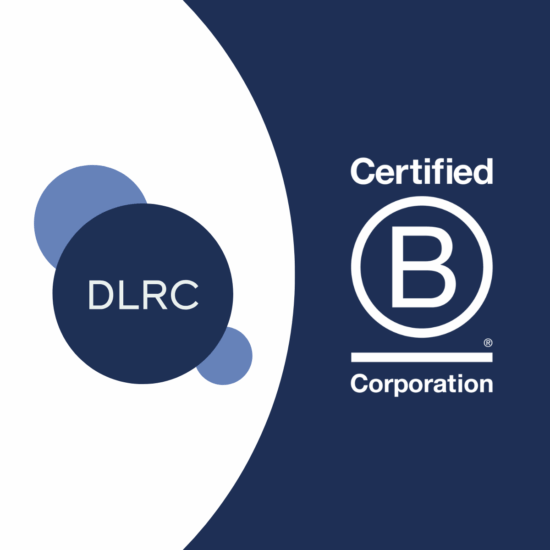Whitepaper: Navigating ICH Q3E: Implications for Extractables and Leachables (E&L) Evaluation
Published Jan 07, 2026
Published 29th July 2025

Antimicrobial resistance (AMR) represents one of the most significant global health challenges of our time. As pathogens evolve resistance to existing treatments, the development of novel antimicrobials has become increasingly critical. However, navigating the complex regulatory landscape for these innovations can be challenging. This blog post explores how the European Medicines Agency (EMA) supports antimicrobial innovation through specialised pathways including the Innovation Task Force, Scientific Advice, PRIME designation, through scientific guidelines, and how DLRC can help developers optimise their regulatory strategy in this evolving landscape.
The EMA has developed scientific guidance for developers of antimicrobials. Specifically:
The guideline on the Evaluation of Medicinal Products Indicated for Treatment of Bacterial Infections outlines the overall clinical development strategy for antibacterial agents, including trial design, microbiological considerations, and regulatory expectations.
The first addendum to this guideline provides indication-specific guidance, detailing clinical trial requirements for infections such as pneumonia, urinary tract infections, and skin infections. It clarifies when non-inferiority or superiority designs are appropriate.
The second addendum to this guideline focuses on paediatric development, offering strategies for extrapolating adult data, designing age-appropriate studies, and aligning with Paediatric Investigation Plans (PIPs).
A further addendum provides guidance to address the clinical development of new agents to treat pulmonary disease due to Mycobacterium tuberculosis.
Scientific guidelines provide general considerations for development but will not always provide enough guidance to ascertain regulatory expectations in all situations, especially for antimicrobials with, e.g., novel mechanisms of action. Therefore, in addition to guidance, interacting with the regulators to discuss development plans can be crucial.
The European Medicines Agencies Network Strategy to 2028 (EMANS 2028) represents a significant commitment to addressing antimicrobial resistance. Titled “Seizing opportunities in a changing medicines landscape,” this strategy guides the European Medicines Agency (EMA) and the Heads of Medicines Agencies (HMA) through a period of major regulatory reform, innovation, and public health challenges.
The framework identifies AMR as one of its six core strategic priorities, underscoring its importance in the European regulatory landscape. The strategy explicitly commits to strengthening regulatory tools that support the development, approval, and responsible use of antimicrobials, creating a more conducive environment for innovation in this critical area.
For developers navigating this landscape, EMANS 2028 emphasises early engagement through tools like PRIME designation and the Innovation Task Force (ITF). This provides a valuable opportunity for antimicrobial developers to receive guidance early in their development journey, potentially saving significant time and resources.
Developers of novel antimicrobials can also seek prospective scientific advice from EMA, allowing them to align development plans with regulatory expectations from the outset. This proactive approach helps reduce the risk of delays and setbacks during later development stages, which is especially important in the antimicrobial space because of the significant unmet medical need.
PRIME is an EMA initiative specifically designed to support the development of medicines that target an unmet medical need and offer a major therapeutic advantage over existing treatments or benefit patients without treatment options. For antimicrobial developers, this initiative represents a valuable opportunity to accelerate development timelines while receiving enhanced regulatory support.
The program provides early and enhanced regulatory guidance to help developers generate robust data and potentially benefit from accelerated assessment during marketing authorisation review. This can significantly reduce time-to-market for promising antimicrobial therapies.
To qualify for PRIME designation, a medicine must meet several specific criteria:
The EMA additionally offers Early Entry PRIME status, particularly targeting small and medium-sized enterprises (SMEs) and academic sponsors who can demonstrate proof of principle.
EMA data indicates that the success rate for PRIME eligibility requests is approximately 25-30%. Common reasons for rejection include insufficient clinical evidence, lack of clear unmet medical need, or overlap with existing therapies. This underscores the importance of having a well-prepared application with compelling preliminary data.
As of June 2025, EMA has granted several PRIME designations for medicines intended to treat antimicrobial diseases, including treatments for viral infections, bacterial infections, and vaccines for prevention of infectious diseases. These designations reflect the recognition of the critical need for new approaches to combat infectious diseases and antimicrobial resistance.
Receiving PRIME designation provides developers with several significant advantages that can streamline the development and approval process:
The Innovation Task Force (ITF) at the European Medicines Agency represents a valuable entry point for early regulatory discussions for developers. This non-binding, informal platform facilitates dialogue between developers and EMA experts at stages where formal scientific advice might be premature.
The ITF is especially beneficial for academics, start-ups, and SMEs working on novel antimicrobial approaches who may have limited experience with regulatory requirements. It provides an opportunity to receive initial feedback on innovative therapies, technologies, or methodologies without the formality of scientific advice procedures.
ITF meetings typically occur before formal scientific advice is sought and cover a wide range of innovations. For antimicrobial developers, this might include advanced therapy medicinal products (ATMPs), novel drug delivery systems for antibiotics, digital health technologies for antimicrobial stewardship, or artificial intelligence applications in development.
The supportive environment of ITF meetings helps developers understand regulatory pathways specific to antimicrobials, data requirements for novel approaches, and potential challenges and opportunities they may encounter. This early guidance can be invaluable in shaping development strategy and preparing for more formal interactions with regulators.
It’s important to understand that ITF meetings complement rather than replace scientific advice. While ITF discussions are exploratory and informal, scientific advice provides formal feedback. Many developers prepare for scientific advice by using ITF meetings to clarify whether their innovation fits within existing regulatory frameworks and what kind of evidence they might need.
EMA offers scientific advice to any developer, providing critical guidance to ensure that development plans for antimicrobial medicines meet regulatory expectations. This formal procedure is distinct from ITF meetings and provides advice that can significantly reduce regulatory uncertainty.
Scientific advice is most valuable early in development, ideally before pivotal trials begin, especially when planning Phase II or III studies. This timing enables developers to incorporate regulatory expectations into trial designs before they commit significant resources. Follow-on scientific advice provides tailored guidance to medicine developers after an initial round of scientific advice or interaction and can also be valuable.
Regulatory clarity enables developers to understand what data and study designs they need to support a future marketing authorisation application, reducing uncertainty about evidence requirements. This can be particularly useful when there is a lack of scientific guidance for products with novel mechanisms of action e.g. phage’s.
For antimicrobial developers specifically, scientific advice may include guidance on stewardship plans, resistance monitoring protocols, and access strategies, all increasingly important considerations in the current regulatory environment.
The EMA provides specialised support for academic institutions involved in antimicrobial research through its dedicated Academic Office. This specialised contact point for academic researchers, including those working on early-stage antimicrobial resistance projects, aims to facilitate communication and help navigate the regulatory framework for pharmaceuticals. This helps bridge the gap between academic innovation and regulatory requirements.
Regulators encourage academics to engage early, especially when exploring novel mechanisms or alternatives to antibiotics.
At the time of marketing authorisation, antimicrobial drugs will require additional documentation in the form of Stewardship and Access Plans (SAPs). These strategic, non-confidential documents outline how a product developer intends to ensure both appropriate antimicrobial stewardship and adequate access to the antimicrobial.
The European Parliament’s position on the proposed directive to update the Union code for medicinal products, replacing older directives and aiming to modernise pharmaceutical regulation, includes several provisions relevant to antimicrobial stewardship and access.
The key elements to be included in these plans are as follows.
These aim to ensure prudent and appropriate use of the antimicrobial:
These ensure broad and fair availability of the medicine across EU Member States:
Environmental Risk Assessments (ERAs) have taken on increased importance for antimicrobial products due to the risk of antimicrobial resistance. These assessments must evaluate the risks to the environment and public health posed by the release of medicinal products, including emissions from manufacturing, use, and disposal.
For medicinal products with antimicrobial action specifically, the ERA must also assess the risk of antimicrobial resistance selection in the environment.
Recent regulatory precedents are helpful to inform regulatory strategy as they can give insights into how other similar products were evaluated and approved, which can help developers anticipate regulatory expectations, such as trial design, endpoints, and data requirements. If a developer proposes a non-standard approach (e.g. smaller trials for rare infections), referencing past approvals with similar conditions can strengthen their case. There is an element of a case-by-case basis, though, and precedent is useful but does not guarantee a similar outcome for a different scenario. CHMP decisions reflect how benefit-risk balances were judged in real-world cases. By analysing how the CHMP has handled novel mechanisms, trial designs, or endpoints, developers can have insights into evolving regulatory thinking.
The European Medicines Agency’s assessment of Emblaveo (aztreonam/avibactam) demonstrates significant regulatory flexibility for novel antimicrobials addressing critical resistance concerns. The CHMP granted accelerated assessment on July 20, 2023, recognizing the product as being of major public health interest due to its activity against metallo-β-lactamase (MBL)-producing multidrug-resistant Gram-negative bacteria.
The EMA accepted limited clinical data for this combination therapy, even though the development program did not aim to isolate the effect of avibactam when added to aztreonam. Instead, the agency accepted a PK/PD-based justification for the dose and efficacy of the combination, supported by non-clinical pharmacodynamic models, population pharmacokinetic modelling, and probability of target attainment simulations.
The safety database included just 305 patients exposed to Emblaveo in Phase 2/3 trials, which the EMA deemed sufficient due to the well-established safety profiles of the individual components, the limited treatment duration, and the serious nature of the infections being treated. Additionally, the pivotal trials did not have sufficient power for formal statistical comparisons, and the EMA accepted descriptive analyses of efficacy outcomes supported by PK/PD modelling and microbiological data.
In addition to approval flexibility, the EMA has also demonstrated its commitment to antimicrobial stewardship through recent changes to the use of azithromycin. These changes were based on a comprehensive review by the CHMP and reflect growing concerns about antimicrobial resistance.
The changes were driven by several factors: rising antimicrobial resistance to azithromycin (classified by WHO as a “Watch” antibiotic with higher AMR risk), increased and broad use across the EU in both adults and children, the need for more rational and targeted use, and alignment with the latest clinical data.
The EMA’s updated guidance on azithromycin retained indications for community-acquired pneumonia (mild to moderate), uncomplicated Chlamydia trachomatis urethritis and cervicitis, skin and soft tissue infections (excluding infected burns), and certain respiratory tract infections (only when other antibiotics are not appropriate).
The EMA removed several indications from its guidance, including acute bacterial sinusitis, acute streptococcal tonsillitis and pharyngitis, and acute exacerbations of chronic bronchitis. The guidance also included harmonised dosing recommendations, updated contraindications and drug interactions, clarified use in pregnancy, and integrated resistance and clinical data.
The regulatory landscape for antimicrobial development in the EU continues to evolve, The EMA has demonstrated flexibility for regulatory approval of an antimicrobial that addresses critical resistance challenges, while simultaneously tightening controls on existing antimicrobials to preserve their effectiveness.
For developers navigating this environment, early engagement with regulators through the Innovation Task Force and scientific advice pathways is strongly advised. PRIME designation represents a valuable opportunity for qualifying antimicrobial products, potentially accelerating development and approval timelines.
DLRC’s regulatory experts have extensive experience guiding clients through interactions with health authorities, optimising development strategies, and preparing compelling regulatory submissions. Whether you’re an academic institution, start-up, or established pharmaceutical company, our team can help you navigate the regulatory. Contact DLRC today at hello@dlrcgroup.com to discuss how we can support your antimicrobial development program and help address this critical global health challenge.

Published Jan 07, 2026

Published Dec 02, 2025

Published Nov 24, 2025

Published Nov 14, 2025

Published Oct 20, 2025

Published Oct 01, 2025

Published Oct 01, 2025

Published Oct 01, 2025

Published Oct 01, 2025